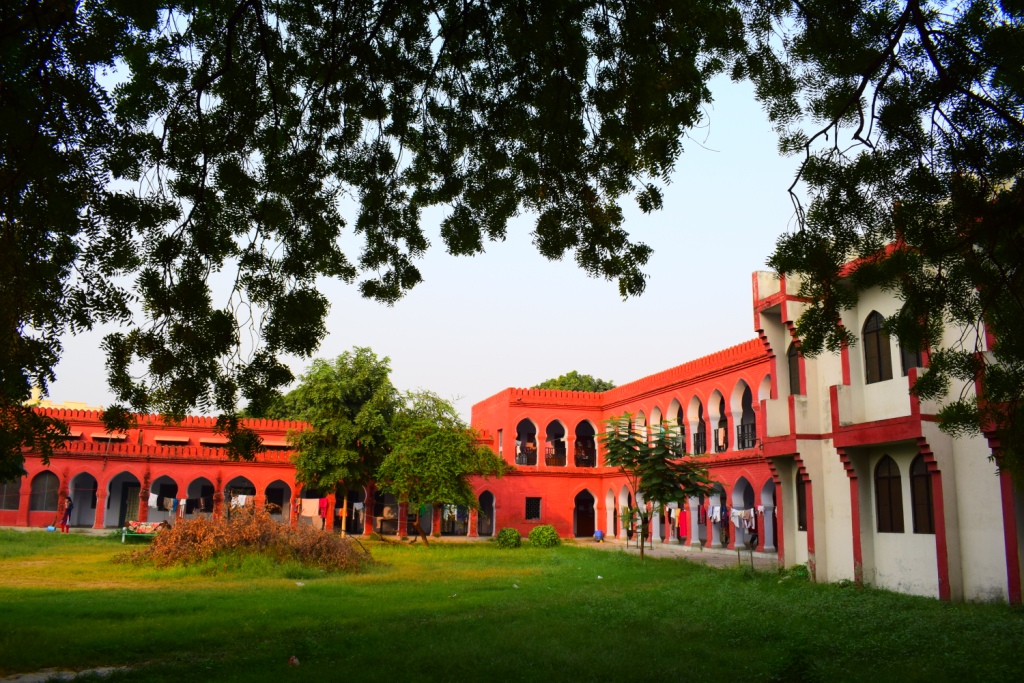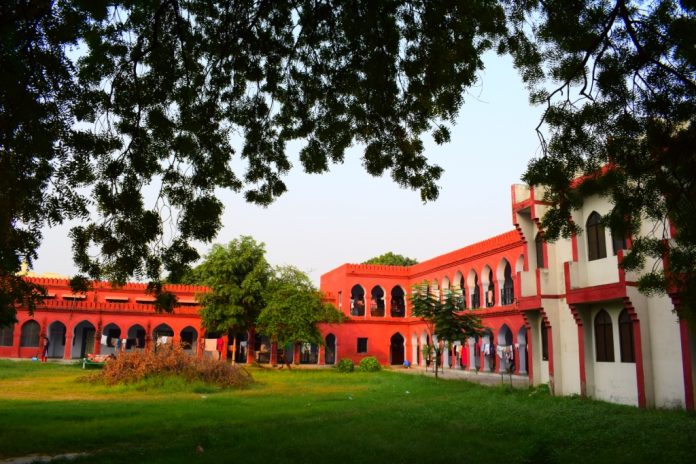By Sharjeel Usmani for TwoCircles.net
More than 140 years ago in a small village in Poonch district in Jammu and Kashmir, Thakur Das was born in a Kashmiri Brahmin family. Hardly anyone dreamed that his birth on June 21, 1874, in coming days will result in breaking the shackles of Muslim girls, bringing them out from the confines of their houses and usher in the light of education.
Thakur Das belonged to a respectable family. His father Mehta Gurmukh Singh and the grandfather of Mehta Mast Ram, one of the Lambardar of the village. Thakur Das received his early education at his village school. Later, he had to leave his home for English education. He first went to Jammu and then to Lahore.

Hardly anyone had the faint idea that Thakur Das’s journey to Lahore will create history in the lives of Muslim women. He will have to face the bitter acrimony of many Muslim stalwarts, many of them who were reformist, educationist when he raked up the issue of educating Muslim women.
While in Lahore, the fifteen-year-old Thakur Das attended an episode of Mohammadan Educational Conference in the company of his beloved teacher and mentor Maulana Nooruddin. In 1891, Thakur Das passed his matriculation examination and was renamed Shaikh Abdullah after he embraced Islam, possibly under the influence of his teacher Maulana Nooruddin.
Thakur Das was now Shaikh Abdullah as he proceeded to Aligarh for higher education where life was going to be tough for him. His dream to educate Muslim women met with stiff resistance. A disgruntled section of agitators who objected to the very idea of a school for Muslim girls always existed. Bulged partly by envy for Shaikh Abdullah and partly by misplaced religious zeal, they expressed their outrage in ingenious and dishonourable ways. In fact, the venerable Sir Syed himself was vehemently opposed to the education of women on purely moral grounds. Shaikh Abdullah, moreover, was convinced that the old educationist Sir Syed Ahmad was adamant to his belief that education would bring waywardness and cause women to break purdah and compete with men.
Soon after coming to Aligarh, he joined the Anjuman al-Farz or Duty Society set up by Sahibzada Aftab Ahmad to foster a sense of voluntary service among students. Under the influence of Sir Syed Ahmad Khan, he began to take interest in social resurgence of Muslims. He attended the meetings of All India Mohammadan Educational Conference. In these meetings, the traditionalists and Muslim clerics were bitterly opposed to the idea of a Western-style education for boys being propagated by Sir Syed Ahmad Khan. No one, in these meetings talked about the education of women.
As children were raised largely in zenana (women’s quarters), women’s role as a teacher of her children was especially important. Soon with Shaikh Abdullah’s continuous efforts, the crusade for women’s education acquired a momentum of its own.
In 1902, Shaikh Abdullah was made the secretary of the women’s section of Muslim Educational Conference because of his interest in women’s welfare. In a couple of years, he started a monthly educational journal for women under the name Khatoon, which aimed at creating a suitable environment for women education. The magazine continued to be published for ten years until Shaikh Abdullah was convinced that the cause of women for which he had fought had been taken up by others in different parts of the country.
Efforts by Shaikh Abdullah resulted in growing acceptance of the idea of school education of women. He wrote a proposal to promote women’s education to Begum Sultan Jahan, the ruler of Bhopal. Begum Sultan Jahan accepted the proposal and one hundred rupees per month grant were allocated to him for women’s education. In 1906, he along with his wife Waheed Jahan Begum managed to start a girl school in a rented building under the name Aligarh Zenana Madarsa with seventeen students on roll. Waheed Jahan Begum’s family helped the reformer couple to find an Ustani (a lady teacher) from Delhi. Classes were held in strictest purdah under the personal supervision of Waheed Jahan Begum. Since she had studied elementary Persian and also knew to write, she herself taught these two subjects.
With classes underway, Shaikh Abdullah wrote a letter to Lt. Governor and an inspectress were sent who gave a favourable report about the school. The Aligarh Zenana Madarsa then received a grant of Rs 17,000 with an additional monthly allowance of Rs 250. There was no looking back since then.
While funds were no longer a problem, the school was not without its share of critics and incendiaries. Sheikh Abdullah dealt with each of these situations with forceful dignity.
Finally, after long struggles, the couple succeeded and bought a plot of land called Nanak Rai Ka Bagh which contained not only a mango orchard but several other tall and dense trees for building a boarding school for girls. However, the idea of building a girl boarding school at a small distance from MAO College led to a chorus of protests from a cross-section of Muslim elites, both from Aligarh and outside, including some such as Dr Ziauddin and Viqar ul Mulq who had initially supported Shaikh Abdullah’s cause.
Unshakeable, Shaikh Abdullah went ahead with his plans for constructing a house that included classrooms, dormitories, dining halls as well as living quarters for teachers –all settled behind high walls. On November 7, 1911, the foundation stone of first girl’s hostel was laid in presence of Lady Porter, wife of the acting Lt. Governor of the United Province. The construction was completed in 1913. Later on, the Begum of Bhopal inaugurated new buildings.
Gradually the number of students grew in strength; by 1926 it had become an intermediate college under the name of Aligarh Women’s College and by 1937 it was offering graduate courses with over 250 students in various classes. The year 1937 also marked an important turn in Shaikh Abdullah’s mission. The Aligarh Women’s College became a part of the Aligarh Muslim University.
All these while, Waheed Jahan Begum served as the backbone of the movement. She herself served as the superintendent of the boarding house for 25 years, from 1914 to 1939. She spent most of her daytime with the students, nursing and caring them. The couple was fondly called as ‘Papa Mian’ and ‘Ala Bi’ by these students, the words resembling father and mother. It was through their joint supervision that a Madarsa run in a rented building would expand into a degree college.
While working tirelessly for women’s education, amidst repetitive denunciation from the university folks, Shaikh Abdullah continued serving his alma mater in various capacities. He was a member of AMU court from 1920 till his death, and also served as Honorary Treasurer for many terms. He was also a leading advocate at Aligarh civil court. His prime interest was in the field of education and social reform but he didn’t keep himself aloof from politics.
He pleaded for modernizing the system of government so as to suit the changing needs of the time. He also served as the member of United Province Legislative Council. He also supported the Khilafat movement. In the late thirties and early forties, he was tortured by the growing differences between Hindus and Muslims. He urged the leaders of the two communities to work for political understanding and communal harmony.
Shaikh Abdullah was a man of action, humanitarian and social reform. He fought all his life for providing education of Muslim women –a task that bristled with great difficulties because of the conservatism of Muslims. He was a man ahead of his time, for he could see that women could do much better and bigger than becoming ‘able’ house-women.
(The Author is a student of Political Science at the Aligarh Muslim University)


